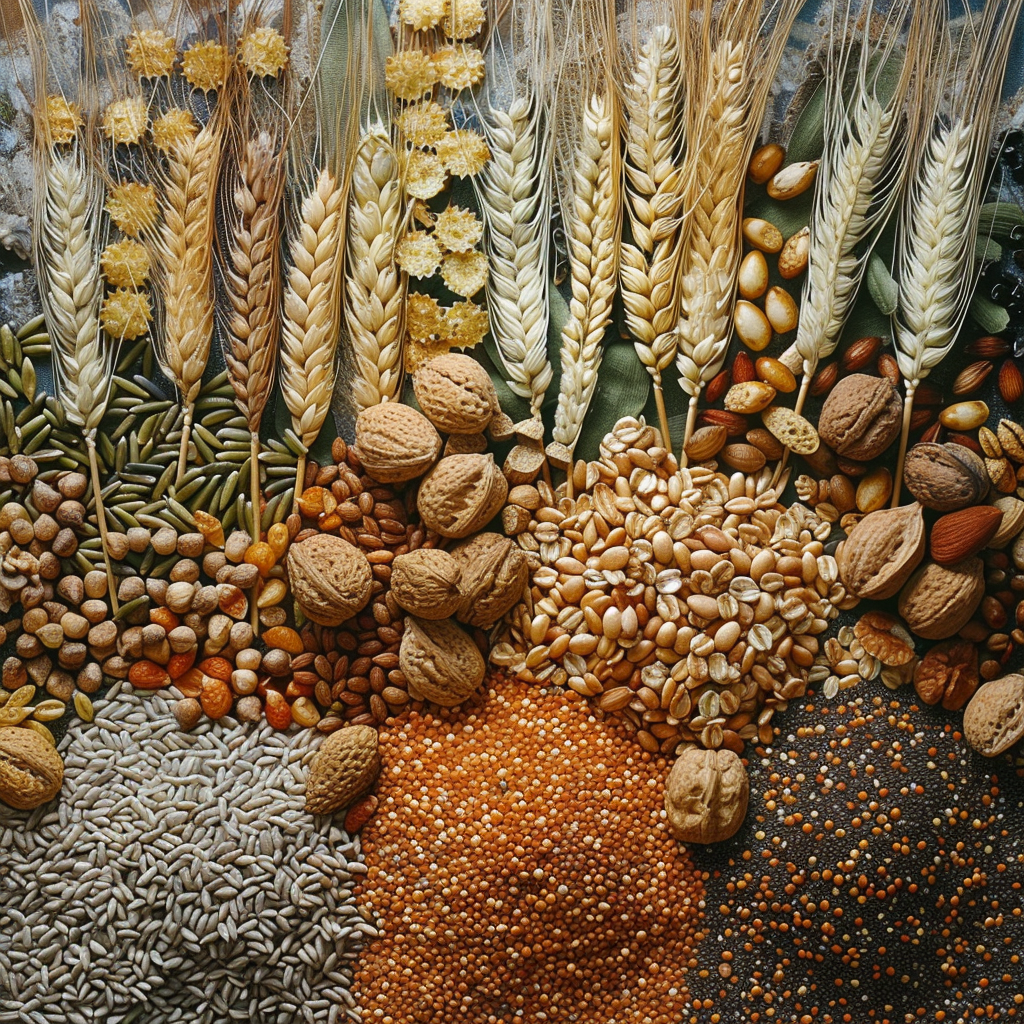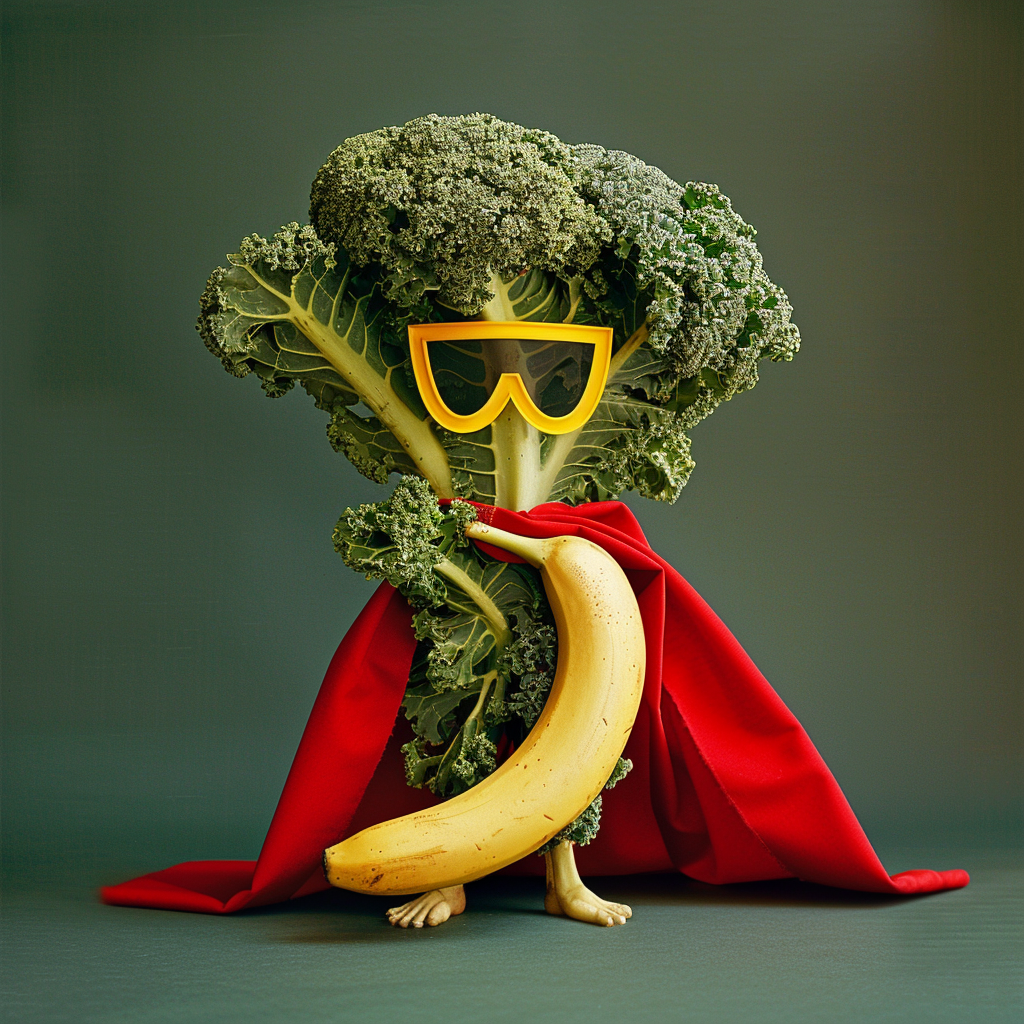What Makes a Superfood a Superfood?
Imagine a world where every bite packs a nutritional punch, warding off illness and boosting your health. That’s the promise of superfoods, these trendy dietary superstars taking center stage on supermarket shelves and bombarding our social media feeds.
But before you stock up on goji berries and acai bowls, let’s delve deeper into the science behind the hype and ask: what makes a superfood a superfood?
The Appeal of the “Super”
The term “superfood” is a relatively recent invention, coined in the early 20th century. Believe it or not, the first poster child for this category wasn’t some exotic Amazonian fruit, but the humble banana.
Back then, the United Fruit Company, in a stroke of marketing genius, used the term “superfood” to promote bananas as a convenient and affordable source of daily nutrition. Talk about a super successful campaign – bananas remain a popular fruit enjoyed worldwide!
This highlights a crucial point: the term “superfood” often has more to do with marketing than with established science.
Sure, bananas are a good source of potassium, but were they really a cure-all for everything from celiac disease to diabetes, as some doctors once believed? Probably not.
The Building Blocks of a Superfood
So, if marketing can create a superfood out of a banana, does that mean the whole concept is a sham?
Not entirely. Science does recognize certain foods as powerhouses of nutrients, offering a range of potential health benefits. But unlike the “one size fits all” approach of superfood marketing, the key lies in the specific nutrients a food offers.
Think of it like building a superhero team. Each member has unique powers, right? Similarly, superfoods boast a variety of beneficial components:
- Antioxidants: These valiant warriors fight free radicals and unstable molecules that damage cells and contribute to aging and disease. Think of them as your body’s internal crimefighters.
- Fiber: This dietary hero keeps your digestive system running smoothly, promotes gut health, and can even aid in weight management.
- Healthy Fats: Don’t be fooled by the “fat” label! Some fats, like those found in fatty fish and avocados, are essential for brain function, hormone production, and reducing inflammation.
- Essential Vitamins and Minerals: These micronutrients are the building blocks of a healthy body, supporting everything from bone health to energy production.
The Skeptical Sidekick
While the science behind certain superfoods is sound, there’s a healthy dose of skepticism needed when navigating the superfood landscape. Here’s why:
- The Marketing Machine: Remember the banana? Food companies are adept at latching onto the “superfood” label to boost sales. This can lead to inflated claims and a focus on the trendy rather than the truly beneficial.
- The “Quick Fix” Fallacy: Superfoods aren’t magic bullets. A balanced diet emphasizing a variety of fruits, vegetables, whole grains, and lean protein is key to overall health. Don’t expect a sprinkle of goji berries to undo the damage of a burger and fries.
- The Overlooked Gems: The focus on trendy superfoods can overshadow readily available, budget-friendly powerhouses like leafy greens, lentils, and nuts.
How to choose your own superfood?
Here’s the real takeaway: there’s no single “superfood” that holds the key to unlocking eternal health. The true path to dietary heroism lies in building a diverse and balanced “superfood squad” of nutrient-rich options. Think of it like creating a well-rounded superhero team, with each member contributing their unique strengths.
Now that we’ve debunked the superfood myth (it’s not about one magical food!), let’s explore how to build your own super squad at the grocery store:
- Fruits and Vegetables: Aim for a rainbow on your plate! Different colored fruits and veggies offer a variety of vitamins, minerals, and antioxidants. Berries are a great source of antioxidants, while leafy greens like kale are packed with vitamins A, C, and K. Don’t forget about cruciferous vegetables like broccoli and cauliflower, known for their potential cancer-fighting properties.
- Whole Grains: Ditch the refined carbs and embrace whole grains like brown rice, quinoa, and oats. These provide sustained energy, fiber, and essential B vitamins.

- Lean Protein: Whether you’re a meat-eater or a vegetarian, include protein sources in your diet. Lean meats, fish (especially fatty fish rich in omega-3 fatty acids), beans, lentils, and tofu are all excellent options.
What else can you do?
Building a well-rounded superfood squad goes beyond the core food groups. Here are some additional powerhouses to consider:
Healthy Fats: Don’t be afraid of healthy fats! Include sources like avocados, nuts, seeds, and olive oil in your diet. These provide essential fats for brain health, hormone production, and reducing inflammation.
Fermented Foods: Embrace the power of gut health! Fermented foods like yogurt, kimchi, and kombucha are teeming with probiotics, beneficial bacteria that aid digestion and may even boost your immune system.
Spices and Herbs: Don’t underestimate the punch these flavor powerhouses pack! Spices like turmeric (known for its anti-inflammatory properties) and ginger (good for nausea and gut health) can add a flavorful boost to your meals while offering potential health benefits.
Remember: Moderation is key. While a handful of nuts is a healthy snack, a whole bag might not be! Balance and variety are essential for building a sustainable and effective superfood squad.
The “Superfood Shuffle”
Let’s face it, eating the same superfoods every day can get boring. Here are some tips to keep your squad fresh and exciting:
Explore Seasonal Produce: Take advantage of what’s in season! Seasonal fruits and vegetables are often at their peak freshness and affordability. Explore farmer’s markets or local grocery stores for seasonal gems.
Get Creative in the Kitchen: Spice up your meals by trying new recipes that incorporate your superfood squad members. There are endless possibilities, from kale and quinoa salads to lentil soups and salmon with roasted vegetables.
Don’t Forget the Classics: Traditional dishes from around the world are often packed with hidden superfood power. Think about the heart-healthy benefits of a Mediterranean diet rich in olive oil, vegetables, and fish.
Superfoods: The Final Verdict
So, are superfoods a myth? Not entirely. Certain foods are packed with a variety of beneficial nutrients, offering potential health advantages. However, the term “superfood” is often overused and can be misleading. Remember, a balanced diet featuring a variety of nutrient-rich options is the true key to unlocking dietary heroism.
Resources:
Barsby, J. P., Cowley, J. M., Leemaqz, S. Y., Grieger, J. A., McKeating, D. R., Perkins, A. V., Bastian, S. E. P., Burton, R. A., & Bianco-Miotto, T. (2021). Nutritional properties of selected superfood extracts and their potential health benefits. PeerJ, 9, e12525. https://doi.org/10.7717/peerj.12525
Brick, M. A., Kleintop, A., Echeverria, D., Kammlade, S., Brick, L. A., Osorno, J. M., McClean, P., & Thompson, H. J. (2022). Dry Bean: A Protein-Rich Superfood With Carbohydrate Characteristics That Can Close the Dietary Fiber Gap. Frontiers in plant science, 13, 914412. https://doi.org/10.3389/fpls.2022.914412
Cobos Á, Díaz O. ‘Superfoods’: Reliability of the Information for Consumers Available on the Web. Foods. 2023 Jan 26;12(3):546. doi: 10.3390/foods12030546. PMID: 36766074; PMCID: PMC9914617.

5 responses to “What makes a superfood a superfood?”
Such a good read! Great deal of advices for making quick, easy and healthy meals.
P.S. Share some of your favorite recipes for us! 😛
Thank you so much!
Sure. I am a fan of simple recipes so here are few you can try out:
https://www.realsimple.com/superfood-dinner-recipes-7151760
Feel free to share as well!
People want to believe superfood exists and marketing helps them get it. Imagine not having to think about diversity in your meals 🙂 And then, there is this interesting example of potato which is more nutritious that we were told… I loved the article, didn’t know that about bananas.
Thank you for the comment. I guess, in this case marketing is not a bad thing because a lot of those food are really nutritious.
I will do a research on potato, thank you for the idea haha. I am glade you liked it!
[…] kale is considered a superfood because it is rich in essential vitamins A, C, B6, K, E, and minerals like copper, calcium, […]